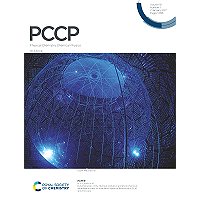The dynamics of the D + MuH(v = 1) reaction has been investigated using time-independent quantum mechanical calculations. The total reaction cross sections and rate coefficients have been calculated for the two exit channels of the reaction leading, respectively, to DMu + H and DH + Mu. Over the 100-1000 K temperature range investigated the rate coefficients for the DMu + H channel are of the order of 10(-10) cm(3) s(-1) and those for the DH + Mu channel vary between 1 x 10(-12) and 8 x 10(-11) cm(3) s(-1). These results point to a virtually barrierless reaction for the DMu + H channel and to the presence of a comparatively small barrier for the DH + Mu channel and are consistent with the profiles of their respective collinear vibrationally adiabatic potentials (VAPs). The effective barrier in the VAP of the DH + Mu channel is located in the reactant valley and, consequently, translation is found to be more efficient than vibration for the promotion of the reaction over a large energy interval in the post threshold region. Below this barrier, the DH + Mu channel can be accessible through an indirect mechanism implying crossing from the DMu + H pathway. The most salient feature found in the present study is revealed in the total reaction cross section for the DMu + H channel, which shows a sharp resonance caused by the presence of a deep well in the vibrationally adiabatic potential. This well has a dynamical origin, reminiscent of that found recently in the vibrationally bonded BrMuBr complex [Fleming, et al., Angew. Chem., Int. Ed., 2014, 53, 1], and is due to the stabilizing effect of the light Mu atom oscillating between the heavier H and D isotopes and to the bond softening associated with vibrational excitation of MuH.

Influence of vibration in the reactive scattering of D plus MuH: the effect of dynamical bonding
Review badges
0 pre-pub reviews
0 post-pub reviews


